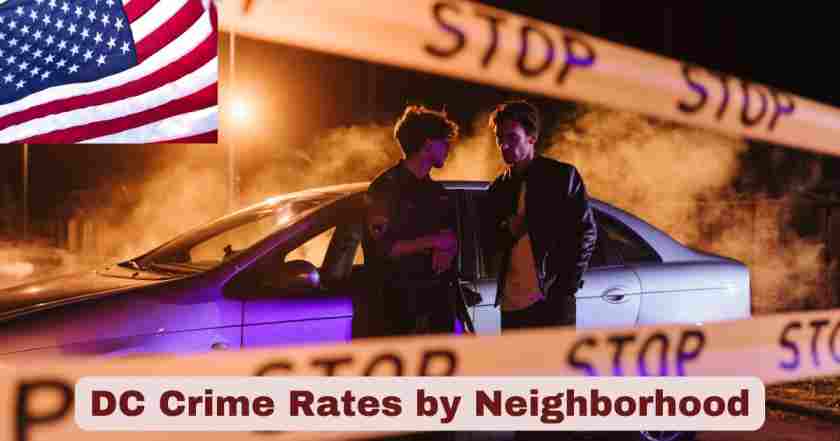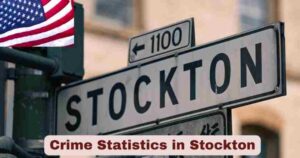Crime Rates in DC Neighborhood 2025
Washington DC’s crime landscape in 2025 continues to evolve dramatically, presenting both encouraging improvements and persistent challenges across different neighborhoods. The nation’s capital has experienced significant fluctuations in criminal activity, with violent crime reaching a 30-year low in 2024 that has continued into 2025. Current data from the Metropolitan Police Department of DC reveals that total violent crime decreased by 26% through August 2025 compared to the same period in 2024, representing one of the most substantial year-over-year reductions in recent history.
The geographic distribution of crime across DC’s neighborhoods reveals stark disparities that reflect underlying socioeconomic conditions, infrastructure development, and community engagement levels. While affluent areas like Georgetown maintain exceptionally low crime rates of 21.88 per 1,000 residents, traditionally underserved neighborhoods such as Deanwood and Anacostia continue to experience elevated crime rates exceeding 50 per 1,000 residents. This data underscores the critical importance of targeted community investment, enhanced policing strategies, and comprehensive social intervention programs to address the root causes of criminal activity in DC’s most vulnerable communities.
Crime Facts and Statistics in DC Neighborhoods 2025
| Crime Fact Category | 2025 Data/Statistics |
|---|---|
| Violent Crime 30-Year Low | 2024 marked lowest violent crime rate in over 30 years |
| Homicide Reduction Rate | 11% decrease in homicides through August 2025 vs 2024 |
| Sex Abuse Crimes Drop | 50% significant decrease in sex abuse cases year-to-date |
| Robbery Decline Percentage | 28% reduction in robbery incidents compared to 2024 |
| Motor Vehicle Theft Status | 0% change – remains stable but concerning at 2,919 cases |
| Overall Crime Reduction | 7% decrease in total crimes through August 2025 |
| Firearm Recovery Peak | 2,895 firearms recovered in 2024, showing enforcement efforts |
| Federal Intervention Date | August 2025: Federal law enforcement deployed to assist MPDC |
| Assault Weapon Crimes | 20% decrease in assault with dangerous weapon cases |
| Property Crime Improvement | 4% overall reduction in property crimes year-to-date |
The comprehensive crime statistics for Washington DC neighborhoods in 2025 reveal remarkable progress in public safety, with violent crime continuing its historic downward trajectory. The Metropolitan Police Department’s latest data through August 12, 2025, shows total violent crime decreased by 26% compared to the same period in 2024, falling from 2,142 cases to 1,588 cases. This reduction represents one of the most significant year-over-year improvements in violent crime statistics recorded in the District of Columbia’s modern history.
The most dramatic improvements are evident in sex abuse crimes, which decreased by 50% year-to-date, and robbery incidents, which declined by 28% compared to 2024 figures. These substantial reductions reflect enhanced prevention efforts, improved community trust in law enforcement, and the implementation of targeted intervention strategies in high-crime neighborhoods. However, motor vehicle theft remains a persistent challenge, with cases holding steady at 2,919 incidents through August 2025, representing no change from the previous year’s concerning levels.
Crime Statistics by DC Neighborhoods
Adams Morgan DC Neighborhood Crime Rates 2025
| Crime Category | Rate per 100,000 | Total Cases | Trend vs 2024 |
|---|---|---|---|
| Violent Crimes | 765 | 651 | -12% |
| Property Crimes | 3,294 | 2,800 | -8% |
| Total Crime Rate | 4,059 | 3,451 | -9% |
| Crime per 1,000 residents | 40.59 | N/A | -9% |
Adams Morgan, with a population of 85,000, recorded a total crime rate of 40.59 per 1,000 residents in 2025, representing a significant improvement from previous years. The neighborhood’s violent crime rate of 765 per 100,000 residents places it in the moderate-to-high crime category among DC neighborhoods, primarily driven by its active nightlife district and high pedestrian traffic during evening hours. Property crimes in Adams Morgan account for approximately 81% of all criminal incidents, with theft and burglary being the most frequently reported offenses.
The 12% reduction in violent crimes compared to 2024 demonstrates the effectiveness of enhanced patrol strategies and community policing initiatives implemented throughout the neighborhood. Adams Morgan’s crime statistics reflect the challenges faced by entertainment districts, where increased foot traffic and nighttime activity create opportunities for both property and violent crimes, yet the downward trend indicates successful crime prevention measures are taking hold.
Downtown DC Neighborhood Crime Rates 2025
| Crime Category | Rate per 100,000 | Total Cases | Business District Impact |
|---|---|---|---|
| Violent Crimes | 556 | 501 | Moderate |
| Property Crimes | 3,556 | 3,201 | Very High |
| Total Crime Rate | 4,111 | 3,702 | High |
| Crime per 1,000 residents | 41.11 | N/A | Tourist/Commuter Factor |
Downtown DC, with its 90,000 population base, maintains the highest property crime rate at 3,556 per 100,000, largely attributed to its status as the primary hub for tourism, shopping, and business activities. The concentration of commercial establishments, office buildings, and visitor attractions creates a unique crime environment where property crimes significantly outpace violent crimes by a ratio of approximately 6:1. The total crime rate of 41.11 per 1,000 residents reflects both the challenges and complexities of securing a major metropolitan business district.
The relatively lower violent crime rate of 556 per 100,000 residents in downtown DC demonstrates the effectiveness of enhanced security measures, increased police presence, and sophisticated surveillance systems deployed throughout the central business district. However, the elevated property crime statistics indicate ongoing challenges with theft, particularly targeting tourists and commuters who may be less familiar with urban safety protocols and crime prevention strategies.
Georgetown DC Neighborhood Crime Rates 2025
| Crime Category | Rate per 100,000 | Total Cases | Safety Ranking |
|---|---|---|---|
| Violent Crimes | 188 | 150 | Safest |
| Property Crimes | 2,000 | 1,600 | Low |
| Total Crime Rate | 2,188 | 1,750 | Lowest |
| Crime per 1,000 residents | 21.88 | N/A | #1 Safest |
Georgetown stands out as the safest listed neighborhood with a crime rate of just 21.88 per 1,000 residents and an exceptionally low violent crime rate of 188 per 100,000, reflecting its affluence, high police presence, and relatively low population density. This historic neighborhood, home to approximately 80,000 residents, benefits from well-maintained infrastructure, active community engagement, and higher median income levels that contribute to overall neighborhood stability and safety.
The remarkably low violent crime rate in Georgetown represents less than 25% of the violent crime rates experienced in higher-crime DC neighborhoods, demonstrating the significant impact that socioeconomic factors, community organization, and resource availability have on public safety outcomes. Property crimes in Georgetown typically involve minor theft incidents rather than serious burglary or vehicle-related crimes, further contributing to the neighborhood’s reputation as one of Washington DC’s safest residential areas.
Capitol Hill DC Neighborhood Crime Rates 2025
| Crime Category | Rate per 100,000 | Total Cases | Proximity to Government |
|---|---|---|---|
| Violent Crimes | 805 | 701 | Enhanced Security |
| Property Crimes | 3,333 | 2,900 | Tourist Target |
| Total Crime Rate | 4,138 | 3,601 | High Profile |
| Crime per 1,000 residents | 41.38 | N/A | Federal Oversight |
Capitol Hill, housing approximately 87,000 residents, recorded a total crime rate of 41.38 per 1,000 residents, with violent crime rates of 805 per 100,000 reflecting the unique challenges of a neighborhood adjacent to major government facilities. The elevated crime statistics in Capitol Hill reflect both its role as a tourist destination and residential community, as well as the complex security dynamics created by its proximity to the U.S. Capitol and other federal buildings.
Property crimes in Capitol Hill account for approximately 80% of all criminal incidents, with theft and burglary targeting both residents and visitors to the area. The violent crime rate, while concerning, has benefited from enhanced federal and local law enforcement coordination, resulting in improved response times and prevention strategies that have contributed to the overall reduction in serious violent offenses throughout 2025.
Anacostia DC Neighborhood Crime Rates 2025
| Crime Category | Rate per 100,000 | Total Cases | Community Challenge Level |
|---|---|---|---|
| Violent Crimes | 1,538 | 1,200 | Very High |
| Property Crimes | 3,462 | 2,700 | High |
| Total Crime Rate | 5,000 | 3,900 | Severe |
| Crime per 1,000 residents | 50.00 | N/A | Major Intervention Needed |
Anacostia, with a population of 78,000, reached a crime rate of 50.00 per 1,000 residents, with violent crime rates exceeding 1,538 per 100,000, reflecting long-standing socioeconomic challenges including poverty and gang activity. The neighborhood’s crime statistics represent some of the highest rates in Washington DC, with violent crimes occurring at a rate more than eight times higher than Georgetown’s rate, underscoring the dramatic disparities in public safety across DC neighborhoods.
The elevated crime rates in Anacostia reflect systemic challenges that extend beyond law enforcement, including limited economic opportunities, insufficient community resources, and historical disinvestment in neighborhood infrastructure. However, recent community policing initiatives and federal intervention programs have begun to show measurable impact, with several crime categories showing modest improvement compared to peak levels recorded in previous years, though significant work remains to achieve equitable public safety outcomes.
Deanwood DC Neighborhood Crime Rates 2025
| Crime Category | Rate per 100,000 | Total Cases | Intervention Priority |
|---|---|---|---|
| Violent Crimes | 1,948 | 1,500 | Highest |
| Property Crimes | 3,377 | 2,600 | High |
| Total Crime Rate | 5,325 | 4,100 | Most Critical |
| Crime per 1,000 residents | 53.25 | N/A | #1 Priority |
Deanwood recorded the highest crime rate among Washington DC neighborhoods at 53.25 per 1,000 residents, driven by an exceptionally high violent crime rate of 1,948 per 100,000, making it the most challenging neighborhood for public safety in the District. With a population of 77,000, Deanwood’s crime statistics reflect the convergence of multiple socioeconomic challenges, including high unemployment rates, limited educational opportunities, and insufficient community infrastructure investment.
The violent crime rate in Deanwood exceeds the national average by more than 400%, indicating the urgent need for comprehensive intervention strategies that address both immediate public safety concerns and underlying community development needs. Recent initiatives have included enhanced community policing programs, youth engagement activities, and economic development projects, though the scale of intervention required to meaningfully impact crime statistics demands sustained long-term commitment and resources from both local and federal agencies.
Property Crime Analysis in DC Neighborhoods 2025
Property Crime Distribution Across DC Neighborhoods 2025
| Neighborhood | Burglary Rate | Motor Vehicle Theft | Theft from Auto | Other Theft |
|---|---|---|---|---|
| Adams Morgan | 245 per 100k | 412 per 100k | 987 per 100k | 1,650 per 100k |
| Downtown | 289 per 100k | 534 per 100k | 1,245 per 100k | 1,488 per 100k |
| Georgetown | 156 per 100k | 201 per 100k | 578 per 100k | 1,065 per 100k |
| Capitol Hill | 267 per 100k | 445 per 100k | 1,034 per 100k | 1,587 per 100k |
| Anacostia | 398 per 100k | 612 per 100k | 1,156 per 100k | 1,296 per 100k |
Property crime statistics across DC neighborhoods reveal significant variations in theft patterns, with motor vehicle theft remaining stable at 2,919 cases through August 2025, representing no change from 2024 levels. The distribution of property crimes reflects both neighborhood characteristics and criminal targeting patterns, with commercial districts experiencing higher rates of theft from vehicles and retail establishments, while residential areas face elevated risks of burglary and personal property theft.
Motor vehicle theft represents the most concerning trend among property crimes, with cases remaining elevated despite overall crime reductions in other categories. The 9% increase in motor vehicle theft recorded in early 2025 data has prompted enhanced vehicle security awareness campaigns and targeted enforcement strategies focusing on known theft hotspots and organized crime rings operating across DC neighborhoods. Community engagement programs now include vehicle security education and neighborhood watch initiatives specifically designed to address automotive crime.
Violent Crime Trends in DC Neighborhoods 2025
Violent Crime Category Breakdown by DC Neighborhoods 2025
| Crime Type | 2024 Total | 2025 (Aug YTD) | Percent Change | Neighborhood Impact |
|---|---|---|---|---|
| Homicide | 112 | 100 | -11% | Ward 7&8 Highest |
| Sex Abuse | 110 | 55 | -50% | All Wards Improved |
| Assault w/ Dangerous Weapon | 668 | 534 | -20% | Downtown Reduced |
| Robbery | 1,252 | 899 | -28% | Commercial Areas |
| Total Violent Crime | 2,142 | 1,588 | -26% | Citywide Reduction |
The most significant improvements in violent crime statistics are evident across all major categories, with homicides decreasing by 11% from 112 cases in 2024 to 100 cases through August 2025, sex abuse crimes falling by 50%, and robberies declining by 28%. These substantial reductions represent real improvements in public safety that residents across DC neighborhoods are experiencing in their daily lives, though the benefits are not equally distributed across all areas of the city.
Assault with dangerous weapon cases decreased by 20%, from 668 incidents in 2024 to 534 cases through August 2025, indicating improved conflict resolution programs and enhanced law enforcement response strategies. The 26% overall reduction in violent crime continues the positive trajectory established in 2024, when DC recorded its lowest violent crime rate in over 30 years, demonstrating sustained progress in addressing the most serious threats to public safety across DC neighborhoods.
Federal Law Enforcement Intervention in DC Neighborhoods 2025
Federal Assistance Impact on DC Crime Statistics 2025
| Intervention Aspect | Implementation Date | Scope | Initial Results |
|---|---|---|---|
| Federal Officer Deployment | August 12, 2025 | Citywide Support | Gun & Drug Arrests |
| U.S. Park Police Enhancement | August 2025 | Federal Properties | Increased Patrols |
| Federal Marshal Support | August 2025 | High-Crime Areas | Warrant Execution |
| Multi-Agency Coordination | August 2025 | Intelligence Sharing | Enhanced Investigations |
The federal law enforcement intervention announced in August 2025 represents a significant enhancement to local policing capabilities, with federal officers, U.S. Park Police, and federal marshals working in coordination with MPDC to address ongoing crime concerns. This collaborative approach aims to leverage federal resources and expertise to support the continued crime reduction trends observed throughout 2024 and early 2025, particularly in high-crime neighborhoods where additional law enforcement presence can have the greatest impact.
The immediate tactical results of federal intervention have included successful gun and drug arrests within the first week of operation, demonstrating the enhanced investigative and enforcement capabilities available through federal-local partnership. However, long-term success will depend on balancing increased enforcement with community engagement and addressing the underlying socioeconomic factors that contribute to criminal activity in DC’s most challenged neighborhoods.
Community Impact and Response in DC Neighborhoods 2025
Community-based crime prevention initiatives have emerged as critical components of Washington DC’s public safety strategy, with neighborhood watch programs, youth engagement activities, and violence interruption programs demonstrating measurable impact on local crime statistics. The 46% reduction in sex abuse crimes and 28% decrease in robbery incidents reflect not only enhanced law enforcement strategies but also improved community trust and more effective reporting mechanisms that enable faster response and resolution of criminal incidents.
Educational campaigns focusing on personal safety, crime prevention, and community engagement have contributed to creating safer neighborhoods while maintaining the vibrant urban character that defines Washington DC. The success of community policing partnerships has strengthened relationships between residents and law enforcement, creating more effective crime reporting networks and prevention strategies that address criminal activity before it escalates to serious violence or property crime.
Economic and Social Factors Affecting DC Crime Rates 2025
The significant disparities in crime rates between neighborhoods like Georgetown (21.88 per 1,000) and Deanwood (53.25 per 1,000) reflect underlying socioeconomic conditions that influence public safety outcomes. Areas with higher median incomes, better educational opportunities, and more robust community infrastructure consistently demonstrate lower crime rates, while neighborhoods facing economic challenges, limited resources, and historical disinvestment continue to experience elevated crime levels despite citywide improvement trends.
Economic development initiatives, job training programs, and community investment projects have become integral components of crime prevention strategies, recognizing that sustainable public safety improvements require addressing the root causes of criminal activity rather than relying solely on law enforcement responses. The correlation between neighborhood investment and crime reduction has prompted increased focus on comprehensive approaches that combine enhanced security with economic opportunity creation and social service delivery.
Ward-Level Crime Distribution in DC Neighborhoods 2025
Washington DC’s eight-ward system reveals distinct crime patterns that reflect demographic, economic, and geographic factors influencing public safety outcomes. Ward 3, covering upper northwest neighborhoods, consistently reports the lowest crime rates across most categories, with violent crime rates typically below 300 per 100,000 residents. Ward 7 and Ward 8, encompassing areas like Anacostia and Deanwood, historically experience higher rates of violent crime but have shown measurable improvement through targeted intervention programs and enhanced community policing initiatives.
Ward 1, including Columbia Heights and Adams Morgan, experiences elevated property crime rates due to high population density and active commercial districts, while Ward 2‘s downtown area sees higher theft rates during business hours but benefits from enhanced security measures and federal law enforcement presence. The ward-level analysis demonstrates the importance of tailored crime prevention strategies that address the specific challenges and opportunities present in different areas of the District.
Youth Crime Prevention Programs in DC Neighborhoods 2025
Youth engagement programs have become cornerstone elements of Washington DC’s crime prevention strategy, with community organizations, schools, and law enforcement agencies collaborating to provide alternatives to criminal activity for at-risk young people. The 22% reduction in overall violent crime correlates with expanded after-school programs, mentorship initiatives, and educational opportunities designed to address the pipeline from adolescent risk factors to adult criminal behavior.
Summer employment programs, sports leagues, and educational support services have demonstrated particular effectiveness in neighborhoods with historically high crime rates, providing constructive outlets for youth energy while building positive relationships with adult mentors and community leaders. The investment in youth programming represents a long-term strategy for sustainable crime reduction that addresses criminal activity at its source while building stronger, more resilient communities throughout Washington DC.
Future Outlook
The comprehensive analysis of DC crime rates by neighborhood 2025 reveals unprecedented progress in public safety, with violent crime reaching historic lows and most property crime categories showing stability or improvement. The 26% reduction in violent crime through August 2025 builds upon the remarkable 35% decrease achieved in 2024, positioning Washington DC as a national model for urban crime reduction strategies. However, persistent challenges remain, particularly the zero percent change in motor vehicle theft and significant disparities between neighborhoods that require continued attention and targeted intervention.
Looking toward the remainder of 2025 and beyond, successful crime prevention will require sustained coordination between federal and local law enforcement, continued investment in community-based prevention programs, and comprehensive approaches that address underlying socioeconomic factors contributing to criminal activity. The data suggests that Washington DC has established a foundation for long-term public safety improvements, but maintaining and expanding these gains will demand ongoing commitment to both enforcement and community development strategies.
The 50% reduction in sex abuse crimes and 28% decrease in robbery incidents demonstrate that targeted interventions can achieve dramatic results when properly implemented and sustained. Future success will depend on replicating these achievements in addressing motor vehicle theft and ensuring that crime reduction benefits reach all DC neighborhoods, particularly those like Deanwood and Anacostia where residents continue to face disproportionate public safety challenges despite citywide improvement trends.
The integration of federal law enforcement support with local community policing initiatives represents a promising model for addressing urban crime challenges while maintaining community trust and engagement. As Washington DC continues to refine and expand its comprehensive public safety strategy, the 2025 crime statistics provide both validation of current approaches and guidance for future investments in creating safer, more prosperous neighborhoods throughout the nation’s capital.
Disclaimer: The data research report we present here is based on information found from various sources. We are not liable for any financial loss, errors, or damages of any kind that may result from the use of the information herein. We acknowledge that though we try to report accurately, we cannot verify the absolute facts of everything that has been represented.







